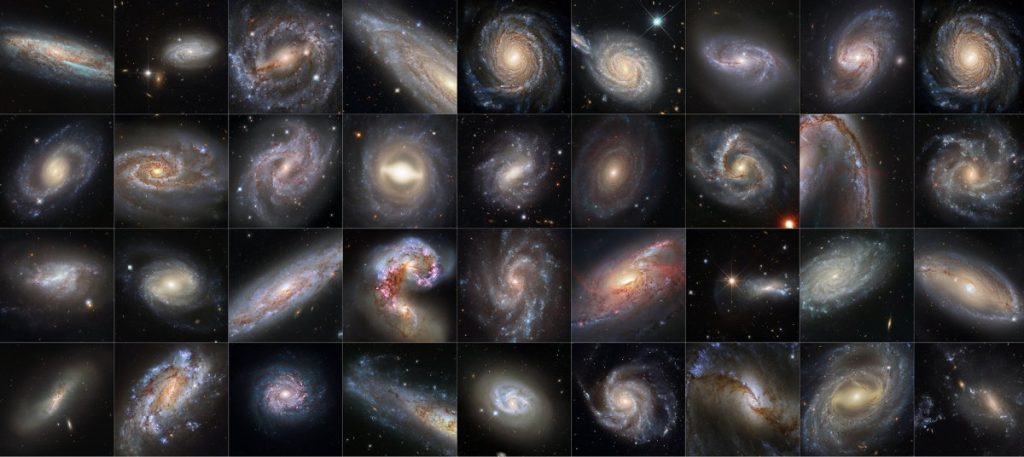The Hubble Space Telescope’s most accurate measurements of the local velocity of the universe’s propagation to date have been completed, and the mysterious discrepancy in the Hubble constant has been reconfirmed. This was announced by Adam Reese, Nobel laureate of the Space Telescope Science Institute. The work presented is now a milestone in the work of the iconic space telescope and to some extent the gold standard: “This is perhaps Hubble’s greatest work, because it will take another 30 years to double the evaluated data set.” The measurement is exactly what Hubble was sent into space for. At that time, the speed of propagation was still so uncertain that information about the age of the universe fluctuated between 8 and 20 billion years.
This is what Hubble was built for
When the Hubble Space Telescope was developed, one reason for the extraordinary effort and enormous costs was the goal of being able to resolve the so-called mesoamerities in and out of the Milky Way, The team writes. These are stars whose brightness strictly periodically fluctuates, and their luminosity is associated with these fluctuations. This allows to accurately determine their distance.In astrophysics, they are as important as the so-called standard candles. The same applies to some stellar explosions, type Ia supernovae. Reese and his team combined these data for 42 galaxies and made the most accurate cosmic distance measurement. Since you see one such supernova annually in the sky, Hubble has measured as many of them as possible.
Based on the distance measurement, the research team also determined the speed at which the universe, relatively close to us, is expanding (the Hubble constant). With an error rate of about one percent, they reach 73 kilometers per second per megaparsec. This is again well above the value of 67 km/sec/Mpc determined by the Planck Space Telescope by measuring the background radiation. In fact, the completion of the Hubble-determined distance measurement was already announced 20 years ago, Rees’ team explains. At that time, the cosmic speed of propagation was determined with an error rate of 10 percent. Then, in 2005 and 2009, new devices were installed on Hubble. They made the most accurate measurement possible.
The Hubble constant (H0) is a basic quantity of cosmology and indicates the speed at which the universe is currently expanding. The value shows how quickly an object at a distance of 1 megaparsec (3.26 million light years) from us recedes due to the expansion of the universe (for example, the Andromeda galaxy is about 0.89 megaparsecs away from us). The constant was first calculated by the American astronomer Edwin Hubble, which now bears his name and then the space telescope was also named. Although the measurements have become more accurate in recent years, they have not provided a uniform value.
The great mystery of astronomy
The paper says that the reason for the long-standing discrepancy between values determined via direct measurement and cosmological measurements of velocity “remains unclear”. For a long time it seemed as if the values could converge, but both are now outside the respective error rate. NASA emphasizes that astronomy is not frustrated by this: after all, the paradox opens the door to the discovery of new physics. In the meantime, there have also been repeated attempts to offer explanations that would make the contradiction disappear. However, no one is convinced yet. With chat now The Astrophysical Journal published the result Anyway, a worn-out space telescope raises the bar even higher.

(Photo: ESA/Hubble)
(mo)

“Total coffee aficionado. Travel buff. Music ninja. Bacon nerd. Beeraholic.”








More Stories
Coral Seeding: Artificial Insemination Makes Coral More Heat Tolerant
Fear, Anger, and Denial: How People Respond to Climate Change – Research
LKH Graz: Using radiation to combat heart arrhythmias